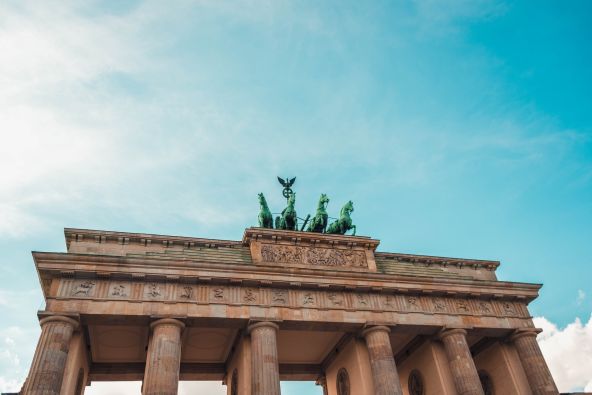History of the cathedral
The first historical records of Berlin Cathedral date back to well into the 15th century. At this time, the medieval brick church near the recently completed palace was converted into the new court church of Joachim II. The cathedral was consecrated in 1536.
Between 1747 and 1750, it was Frederick II who had the now dilapidated brick church torn down and a new cathedral built in the neo-baroque style on its current site. After Johann Boumann and Georg Wenzeslaus von Knobelsdorff had been commissioned with the construction, Karl Friedrich Schinkel transformed the cathedral into a simpler, modern classicist form at the beginning of the 19th century. Later, King Frederick William IV had the building in the heart of the city redesigned again. The cathedral was to be transformed into a more magnificent church with Italian style elements based on designs by Friedrich August Stüler.
After the founding of the German Empire, a new reorganization seemed necessary. Berlin was now not only the capital, but also a rapidly growing metropolis. An old cathedral was therefore no longer considered representative enough. And so, in 1885, Julius Carl Raschdorff was commissioned to draw up detailed plans for a comprehensive rebuild. The result was an extraordinary building in the neo-renaissance and neo-baroque style. However, as the Prussian House of Representatives only approved ten million Reichsmarks for the building instead of the planned twenty million, Raschdorff had to adapt his plans several times. And so it was not until June 17, 1894 that work began on the new building. After a number of difficulties and delays during construction, the new cathedral was finally consecrated on February 27, 1905. The design of the altar windows, the beautiful dome mosaics, the pulpit and the impressive bronze doors was carried out under the guidance of Anton von Werner.
While an Allied air raid during the Second World War severely damaged the impressive building in places, the cathedral is still the largest Protestant church in Germany in terms of area. In addition, the Hohenzollern crypt in the basement of the cathedral is one of the most important dynastic burial sites in the whole of Europe. Princes and kings from the House of Hohenzollern such as King Friedrich I, Sophie Charlotte and Queen Elisabeth Christine still rest here today.




















































































